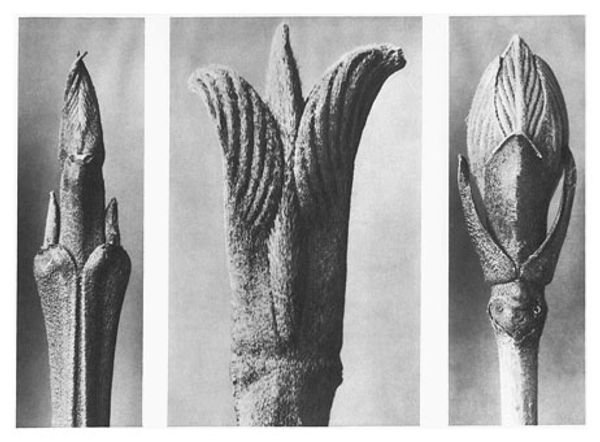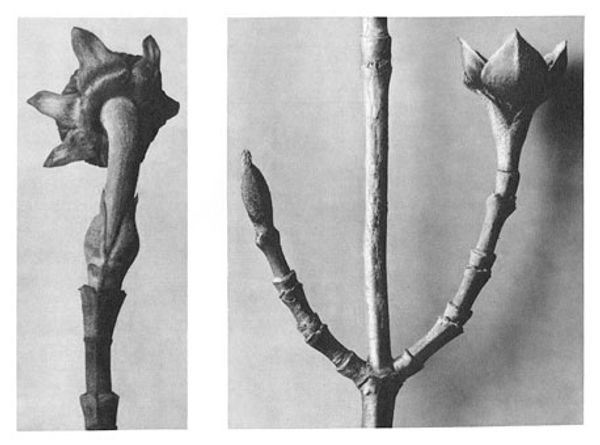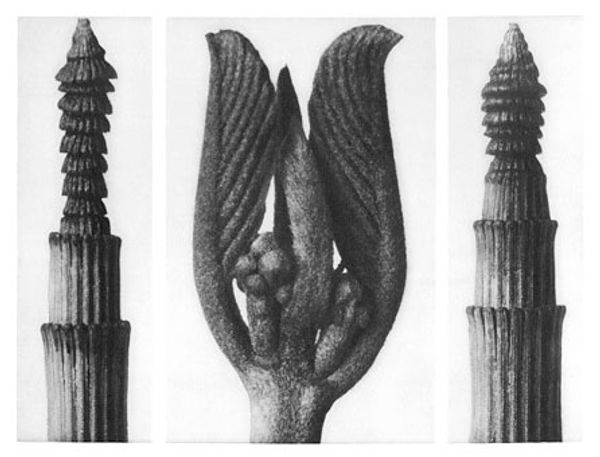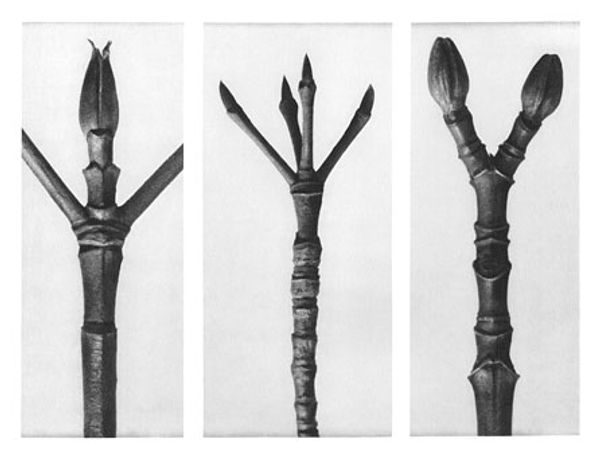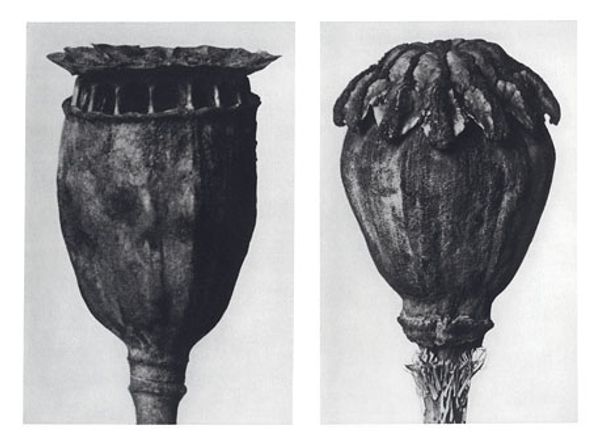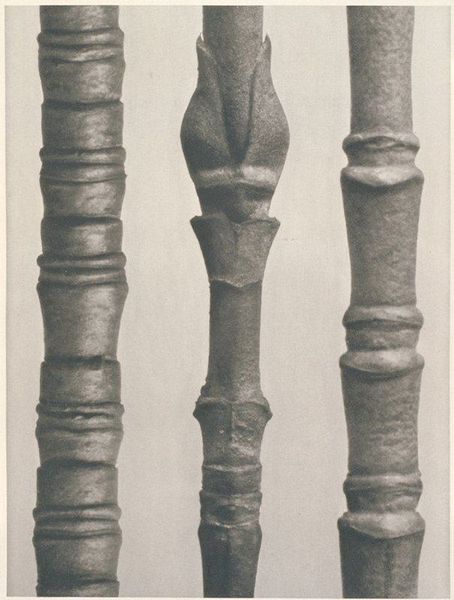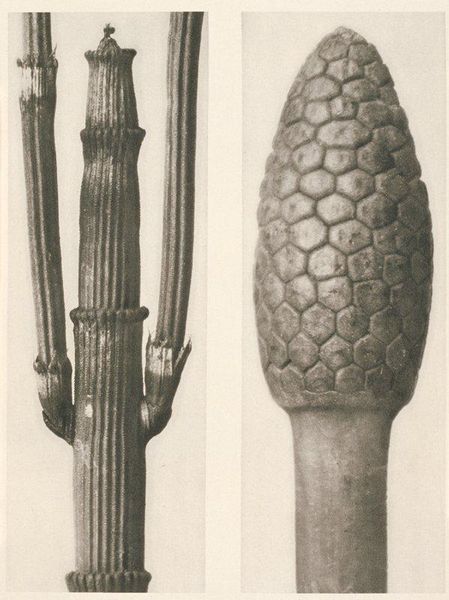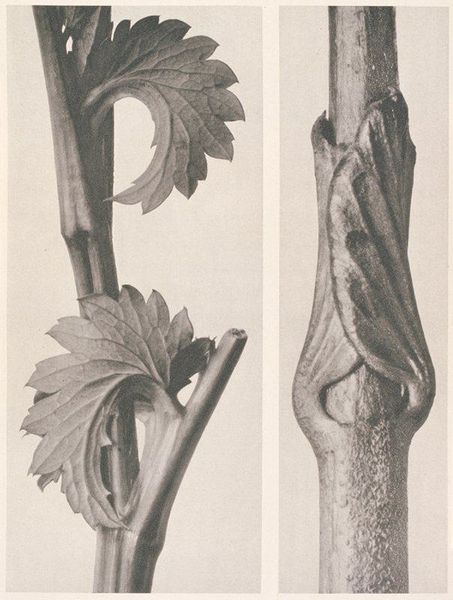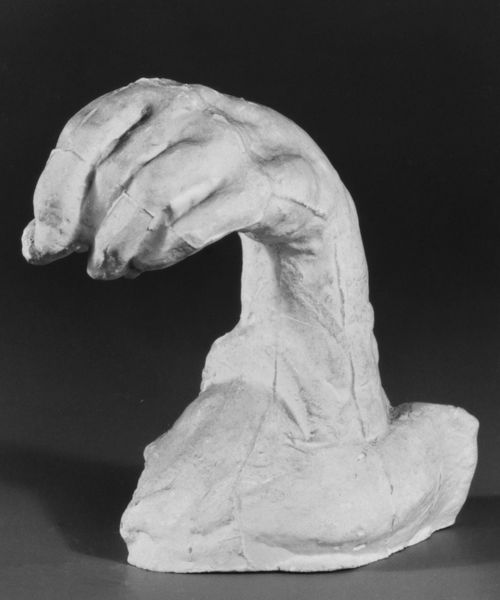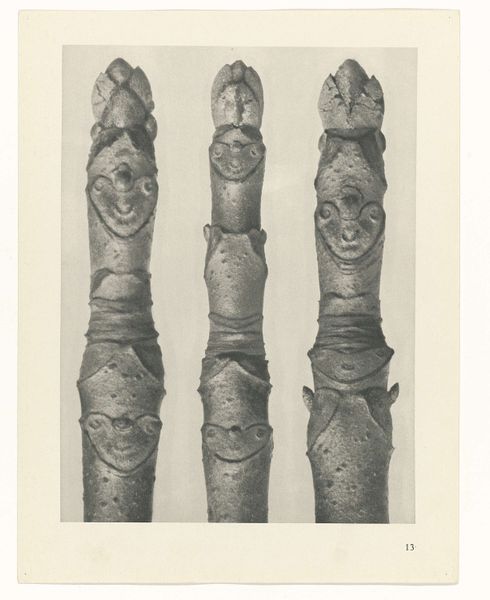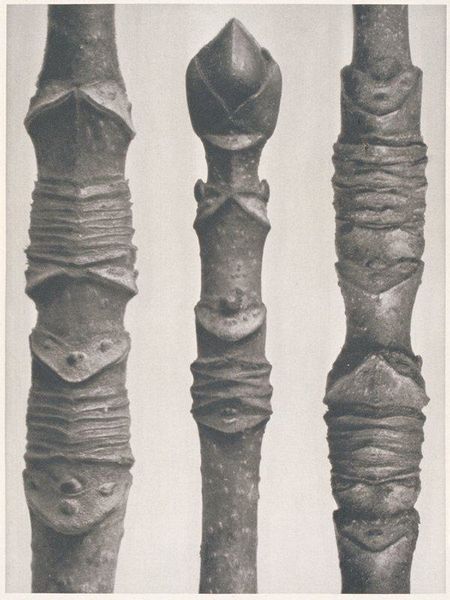
Copyright: Public domain
Editor: Here we have Karl Blossfeldt’s, "Art Forms in Nature 9," from 1928. It's a gelatin silver print, showcasing three different plant buds in striking detail. They feel almost like sculptures, isolated against the neutral background. How do you interpret this work? Curator: I see these magnified plant forms as echoing primal symbols, drawing on the deep-seated human impulse to find patterns and meaning in the natural world. Think about the persistent symbolism of the seed, the bud, representing potential, the generative power of life itself. Editor: So, Blossfeldt is tapping into something ancient? Curator: Absolutely. The sharp focus and stark presentation reminds me of scientific illustration, aiming for objective truth, yet they inadvertently evoke a sense of wonder and the sublime. Do you notice the geometric precision? It mirrors the universal language of form we see repeated throughout different cultures. Consider mandalas, architectural blueprints, the recurring patterns reflecting underlying order and the human desire to capture that order. Editor: It's almost like he's turning science into sacred geometry. The buds are so still, yet they’re about to burst with life. Curator: Precisely. It’s the moment of anticipation. That moment carries so much weight. By isolating these details, Blossfeldt reminds us that the world’s most transformative moments often happen in quiet, hidden spaces. Editor: I never would have thought of that myself! I’ll definitely be spending more time considering that generative pause. Curator: I'm delighted to hear it; noticing those liminal spaces can give us a greater sensitivity to the flow of existence itself.
Comments
No comments
Be the first to comment and join the conversation on the ultimate creative platform.
